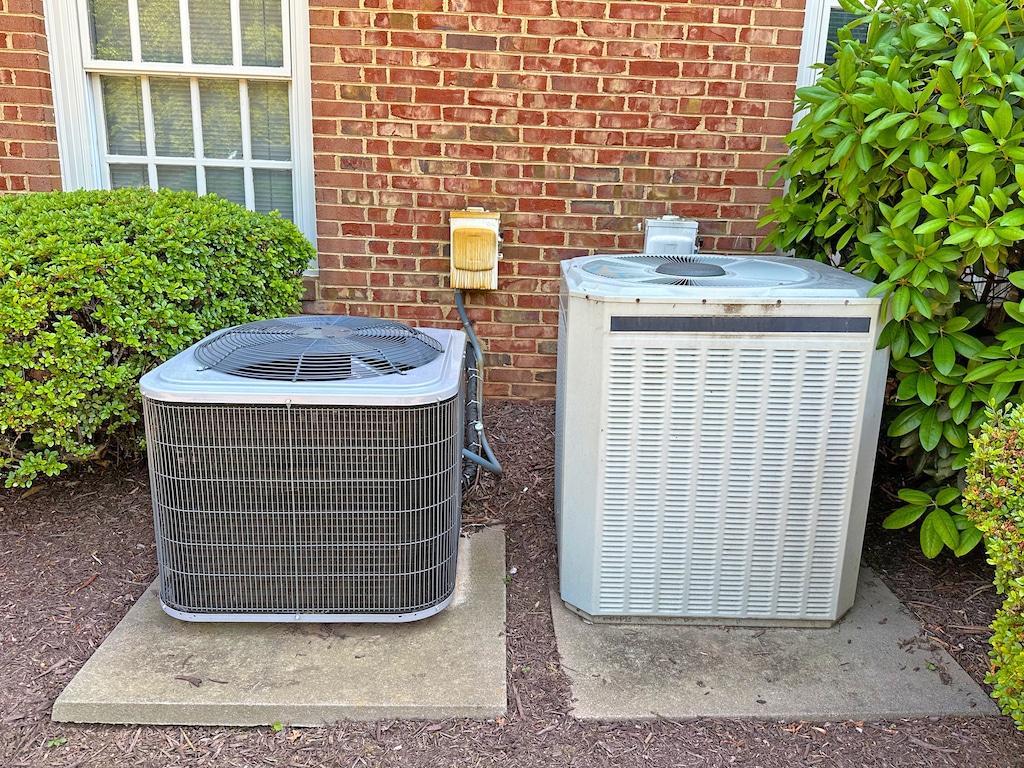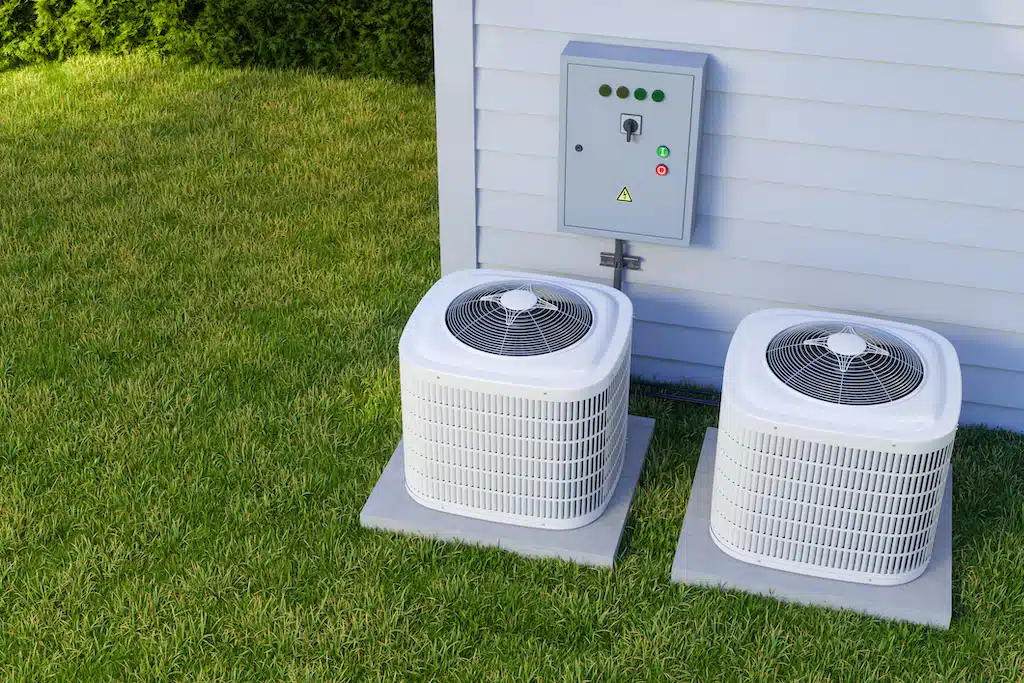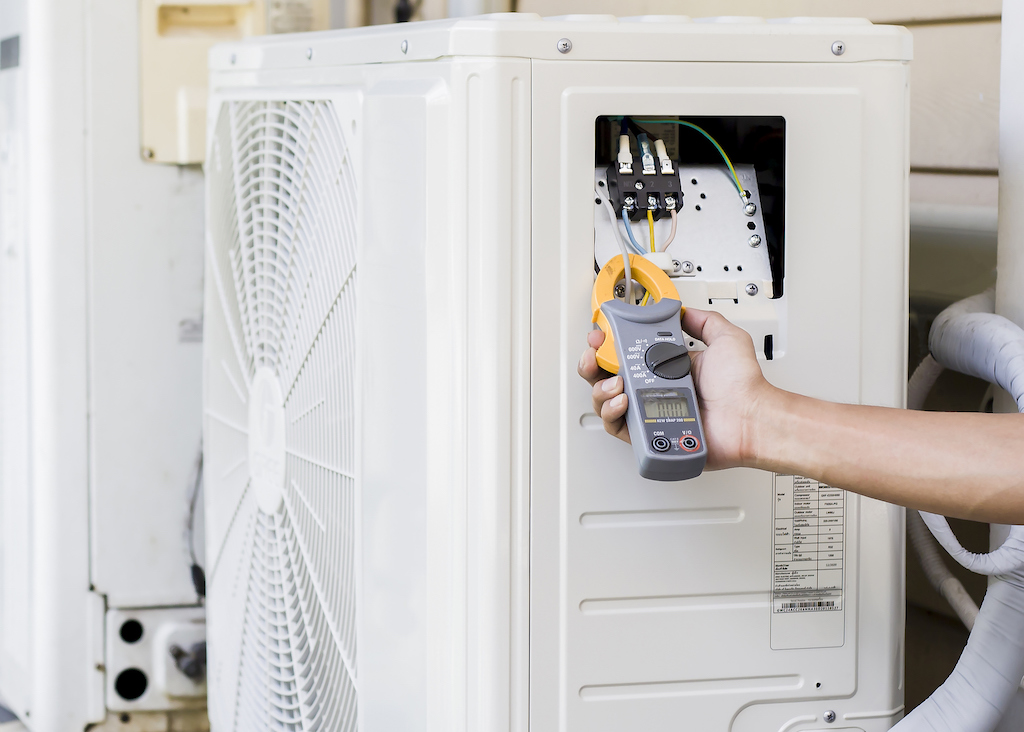
Unlock Comfort: Your Essential Residential HVAC Design Guide
Have you ever wondered how your home can maintain that perfect temperature, regardless of the scorching summer heat or the biting winter cold?
The secret lies in a well-designed residential HVAC design residential HVAC design guide, tailored specifically for residential spaces.
This article dives deep into the world of residential HVAC design, offering you insights and guidelines to ensure your home’s climate control is both efficient and effective.
We’ll explore the intricacies of residential HVAC design, covering everything from the basics of HVAC systems to advanced design strategies that can save you money and enhance your comfort.
Whether you’re building a new home, renovating an existing one, or simply curious about how HVAC systems work, this residential HVAC design residential HVAC design guide has got you covered.
Get ready to unlock the secrets of HVAC design and transform your home into a haven of comfort and efficiency.
Also read: Effortless Comfort: Air Conditioning For Homes With Boilers Service

Photo By onurdongel at iStock
What is a Residential HVAC Design Guide?
Residential HVAC design guide is a critical aspect of creating a comfortable, energy-efficient home environment.
It’s not just about installing a heating or cooling system; it’s about crafting a comprehensive solution tailored to the specific needs of a home and its occupants. This process involves meticulous planning and implementation of heating, ventilation, and air conditioning systems to ensure optimal indoor air quality, comfort, and energy efficiency.
At the heart of an effective residential HVAC design guide is the principle of selecting the right size and type of system. This decision is paramount because an oversized or undersized HVAC system can lead to inefficiencies, increased energy costs, and uneven temperatures throughout the home.
The process includes calculating the home’s heating and cooling demands based on factors such as square footage, insulation quality, window types, and the local climate.
Moreover, the residential HVAC design guide process extends to determining the best layout for equipment and ductwork.
Proper residential HVAC design guide ensures that air is distributed evenly and efficiently throughout the home, eliminating hot or cold spots and optimizing comfort. This step often involves sophisticated software and methodologies, like Manual D for duct design, to calculate the optimal configuration.
Incorporating modern technologies is another cornerstone of residential HVAC design guide. Innovations such as smart thermostats, zoning systems, and energy-efficient HVAC units can significantly enhance a home’s comfort and reduce energy consumption.
Smart thermostats, for example, adjust the temperature based on your habits and preferences, while zoning systems allow for different temperature zones within the home, ensuring personalized comfort and efficiency.
The goal of a residential HVAC design guide is to create a system that maintains a comfortable and healthy indoor environment year-round, regardless of the outdoor conditions.
By focusing on energy efficiency, the residential HVAC design guide not only contributes to a more sustainable future but also results in lower utility bills for homeowners. With the right approach, residential HVAC design can transform a house into a haven of comfort and tranquility, tailored to the unique needs of its residents.
Residential HVAC Design Guide: Understanding the Basics of HVAC Systems
Grasping the foundational elements of residential HVAC design guide is crucial for anyone looking to understand or improve their home’s heating, ventilation, and air conditioning.
These systems are integral to maintaining a comfortable indoor environment, regardless of the weather outside. Let’s break down the essential components and functions of a typical residential HVAC system.
Residential HVAC Design Guide: Core Components of an HVAC System
Outdoor Unit: This component is usually located outside the home and houses the condenser coil, compressor, and a fan. For air conditioning systems and heat pumps, the outdoor unit plays a crucial role in expelling heat from the home during the summer and drawing in heat during the winter.
Indoor Unit: Found inside the home, this unit typically includes a furnace or an air handler. It’s responsible for circulating air throughout the building’s ductwork. In the case of a furnace, it also generates heat by burning fuel or using electric heating elements.
Ductwork: This network of tubes is essential for distributing heated or cooled air throughout the home. Properly designed and sealed ductwork ensures efficient airflow and prevents loss of energy.
Thermostat: The control center for the HVAC system, a thermostat, allows homeowners to set and maintain the desired temperature within their home.
Modern thermostats offer programmable settings and smart technology for enhanced energy efficiency and convenience.
Residential HVAC Design Guide: The HVAC Cycle Explained
The primary function of an HVAC system is to maintain a comfortable indoor climate by transferring heat in and out of your home and ensuring the air quality is high.
During the summer months, the system works by removing heat from the interior air and expelling it outside, thus cooling the indoor space. This process involves the refrigerant circulating between the indoor and outdoor units, absorbing indoor heat and releasing it outdoors.
Conversely, in the winter, the system (particularly if it’s a heat pump) reverses this process by extracting heat from the outdoor air and transferring it inside to warm the home.
Furnaces generate warmth by burning fuel or using electricity to heat the air, which is then circulated throughout the house via the ductwork.
Residential HVAC Design Guide: Importance of Air Quality and Filtration
Maintaining indoor air quality is another vital function of the HVAC system. This is achieved through a combination of air filtration and ventilation.
Filters trap dust, pollen, and other airborne particles, preventing them from circulating through your home. Regularly replacing or cleaning these filters is crucial for maintaining effective air quality and ensuring your HVAC system operates efficiently.
Understanding the basics of residential HVAC design guide is the first step toward achieving a comfortable, energy-efficient home environment.
By familiarizing yourself with the components and functions of your HVAC system, you can make informed decisions about maintenance, upgrades, and when to consult professionals for service or advice.
Also read: Effortless Ac Repair: Your Comfort Restored
The Significance of Proper Sizing in Residential HVAC Design Guide
Proper sizing of an HVAC system is a cornerstone of efficient and effective residential HVAC design.
It’s a critical step that impacts not only the comfort of your home but also the longevity of the system and your energy bills. Let’s delve into why proper sizing is so crucial and the process involved in ensuring your HVAC system is just the right fit for your home.
Residential HVAC Design Guide: Understanding the Impact of Oversized and Undersized Systems
Oversized Systems: An HVAC system that’s too large for a space can lead to short cycling, where the system turns on and off more frequently than necessary.
This not only leads to inefficiency in energy use but also puts excessive wear on the system components, potentially reducing the system’s lifespan. Moreover, oversized systems often struggle to properly dehumidify the air, leading to a clammy feeling in the home during warmer months.
Undersized Systems: On the other hand, a system that’s too small will constantly run in an attempt to reach the desired temperature, struggling to keep up, especially during extreme weather conditions.
This continuous operation can lead to increased wear and tear, higher energy consumption, and an inability to maintain comfortable indoor temperatures.
The Role of Manual J Load Calculation
The Manual J load calculation is the industry-standard method used to determine the proper size of an HVAC system for a home.
This detailed analysis takes into account various factors that influence the home’s heating and cooling requirements, including:
Square Footage: The total area to be heated or cooled.
Layout: The design and orientation of the home, which affects sunlight exposure and heat retention.
Insulation: The quality and amount of insulation in walls, attics, and floors, which can significantly impact heating and cooling needs.
Window Types and Locations: Windows can be a major source of heat loss or gain, depending on their type, location, and the direction they face.
Local Climate: The average temperatures, humidity levels, and seasonal variations in your area.
Occupancy and Appliance Heat: The number of people living in the home and the heat generated by appliances and lighting.
By considering all these factors, the Manual J calculation provides a comprehensive view of a home’s HVAC needs, ensuring that the system selected is neither too large nor too small but perfectly suited to the home’s requirements.
The Benefits of Proper HVAC Sizing
Ensuring your HVAC system is properly sized brings numerous benefits, including:
Enhanced Comfort: A correctly sized system maintains consistent temperatures throughout the home, providing a comfortable living environment year-round.
Energy Efficiency: A system that’s the right size operates more efficiently, using less energy to heat or cool the home, which translates to lower utility bills.
Longevity of the System: Proper sizing reduces the strain on the HVAC system, potentially extending its lifespan by preventing excessive wear and tear.
The significance of proper sizing in residential HVAC design guide cannot be overstated. It’s a critical step that ensures your HVAC system delivers optimal performance, comfort, and efficiency. Consulting with HVAC professionals who can perform a Manual J load calculation is essential in achieving the perfect balance for your home’s heating and cooling needs.
Zoning Systems: Customized Comfort and Savings in Residential HVAC Design
Zoning systems have revolutionized residential HVAC design guidelines by offering unparalleled control over the heating and cooling of different areas within a home.
This advanced approach not only maximizes comfort for occupants but also contributes significantly to energy savings. Let’s explore how zoning systems work and the benefits they bring to residential HVAC setups.
How Zoning Systems Work
Zoning systems divide a home into different areas or “zones,” each controlled independently by its own thermostat. These zones can be as broad as an entire floor or as specific as a single room.
The system is managed by a central control panel that regulates dampers within the ductwork, opening and closing them as needed to direct airflow only to the zones requiring heating or cooling. This targeted approach ensures that each area of the home can maintain its own temperature setting, providing personalized comfort throughout.
Key Components of a Zoning System
- Multiple Thermostats: Installed in each zone for independent temperature control.
- Central Control Panel: Coordinates the operation of the system, processing signals from the thermostats to adjust the heating or cooling output accordingly.
- Motorized Dampers: Placed within the ductwork to regulate the flow of air to different zones, opening to allow air into a zone when heating or cooling is needed and closing when the desired temperature is reached.
Residential HVAC Design Guide: Benefits of Implementing Zoning in HVAC Systems
Enhanced Comfort: By allowing different temperatures to be set in various parts of the home, zoning systems ensure that every room is at a comfortable level, catering to the individual preferences of occupants.
Increased Energy Efficiency: Zoning eliminates the need to heat or cool unoccupied spaces, significantly reducing energy waste. This targeted approach means the HVAC system can operate more efficiently, leading to lower energy bills.
Longer System Lifespan: Because zoning systems reduce the overall demand on the HVAC system by focusing on specific areas as needed, they can help extend the lifespan of the system by preventing overuse and minimizing wear and tear.
Flexibility and Convenience: Zoning offers the flexibility to accommodate different schedules and lifestyle needs.
For example, unoccupied guest rooms can be kept at a different temperature setting than the rest of the house, or living areas can be warmed or cooled based on the time of day.
Customization to Fit Every Home
The beauty of zoning systems lies in their versatility.
Whether it’s a large home with varying occupancy in different rooms or a smaller residence with specific heating and cooling challenges, a zoning system can be tailored to meet the unique needs of any space.
This customization ensures that every homeowner can enjoy the benefits of a comfortable, energy-efficient home tailored precisely to their requirements.
Zoning systems represent a significant advancement in residential HVAC design guide, offering a perfect blend of comfort, efficiency, and customization.
By allowing homeowners to control the temperature in different areas of their home independently, zoning systems not only enhance the living environment but also contribute to substantial energy savings and a reduced carbon footprint.
Residential HVAC Design Guide: Ventilation
Ventilation is an essential component of residential HVAC design guide, playing a pivotal role in ensuring a healthy and comfortable indoor environment.
Effective ventilation strategies are key to diluting and removing indoor pollutants, moisture, and odors, thereby enhancing the overall air quality in your home.
Let’s delve into the importance of good ventilation and the various methods to achieve it.
Residential HVAC Design Guide: Importance of Proper Ventilation
Health Benefits: Good ventilation reduces the concentration of pollutants, allergens, and airborne contaminants, which can significantly impact respiratory health and overall well-being.
Moisture Control: By exchanging moist indoor air with drier outdoor air, ventilation helps prevent the accumulation of excess humidity, thereby reducing the risk of mold growth and structural damage.
Odor Elimination: Effective ventilation systems help remove unpleasant odors, ensuring that indoor spaces remain fresh and inviting.
Natural Ventilation: Harnessing the Environment
Natural ventilation relies on the natural flow of air through windows, doors, and other openings to refresh and circulate indoor air.
This method is most effective in climates where the outdoor air is clean and temperate, allowing for the comfortable exchange of indoor and outdoor air without the need for mechanical systems.
Cross Ventilation: By strategically opening windows on opposite sides of a home, cross ventilation allows for a natural breeze to flow through, carrying away stale air and bringing in fresh air.
Ventilation through residential HVAC design guide: Architectural features such as transom windows, clerestories, and operable skylights can enhance natural ventilation, promoting air circulation and light penetration.
Mechanical Ventilation: Controlled Air Exchange
Mechanical ventilation systems, such as Heat Recovery Ventilators (HRVs) and Energy Recovery Ventilators (ERVs), offer a more controlled approach to ventilation. These systems efficiently exchange indoor air with fresh outdoor air, recovering heat or energy in the process to minimize energy loss.
HRVs and ERVs: These systems are particularly beneficial in tightly sealed homes, where natural ventilation may be insufficient.
HRVs and ERVs not only ensure a constant supply of fresh air but also retain a portion of the energy used to heat or cool the home, making them an energy-efficient ventilation solution.
Spot Ventilation: Targeting Specific Areas
Spot ventilation focuses on removing pollutants and moisture at their source. This method is commonly used in kitchens, bathrooms, and laundry rooms, where moisture and odors are most prevalent.
Exhaust Fans: Installing exhaust fans in these areas can significantly improve air quality by directly venting pollutants and moisture outside, preventing their spread throughout the home.
Incorporating a combination of these ventilation strategies into residential HVAC design guides ensures that homes not only remain comfortable but also support the health and well-being of their occupants. By prioritizing good ventilation, homeowners can enjoy a fresher, cleaner living environment, underscoring the critical role of ventilation in achieving optimal indoor air quality.
Embracing Energy Efficiency in Residential HVAC Design Guide
Energy efficiency is not just a buzzword in the realm of residential HVAC design; it’s a fundamental principle that residential HVAC design guides the selection, installation, and operation of heating, cooling, and ventilation systems in homes.
By embracing energy-efficient practices and technologies, homeowners can significantly reduce their carbon footprint, lower their energy bills, and contribute to a more sustainable future.
Let’s explore the key considerations and strategies for enhancing energy efficiency in residential HVAC systems.
Residential HVAC Design Guide: Selecting High-Efficiency Equipment
ENERGY STAR® Rated Appliances: One of the first steps in ensuring energy efficiency is to choose HVAC equipment that has earned the ENERGY STAR® label. These products meet strict energy efficiency residential HVAC design guidelines set by the U.S.
Environmental Protection Agency and the Department of Energy. From air conditioners to furnaces, ENERGY STAR® rated appliances use less energy than standard models, leading to substantial savings on utility bills.
Advanced HVAC Technologies: Modern HVAC systems come equipped with features such as variable speed motors, smart thermostats, and zoning capabilities.
These technologies allow for more precise control over heating and cooling, reducing energy consumption by adjusting output to the exact needs of the home.
Incorporating Renewable Energy Sources
Solar Energy Systems: Integrating solar panels with residential HVAC systems is a powerful way to harness renewable energy for heating and cooling purposes.
Solar energy can power HVAC units directly or offset electricity consumption, leading to lower energy costs and a reduction in greenhouse gas emissions.
Geothermal Heat Pumps: Another renewable option is geothermal (or ground-source) heat pumps, which utilize the stable temperature of the earth to provide efficient heating and cooling.
Though the initial installation cost can be higher, geothermal systems offer significant long-term savings and environmental benefits.
Residential HVAC Design Guide: Enhancing Home Insulation and Sealing
Insulation Improvements: Proper insulation is critical in minimizing heat loss in winter and heat gain in summer.
By investing in high-quality insulation for walls, attics, and floors, homeowners can maintain more consistent indoor temperatures, reducing the demand on HVAC systems.
Air Sealing: Eliminating leaks around doors, windows, and other openings is another effective strategy for improving energy efficiency. Sealing these leaks prevents warm or cool air from escaping, further decreasing the energy required to heat or cool the home.
Regular Maintenance and Upgrades
Routine System Maintenance: Regular maintenance, including cleaning or replacing air filters, inspecting ductwork for leaks, and scheduling professional HVAC tune-ups, ensures that systems operate at peak efficiency.
Upgrading to Energy-Efficient Models: As HVAC technologies evolve, older systems can become less efficient compared to newer models. Upgrading to a more energy-efficient system can offer significant energy savings and improve indoor comfort.
Embracing energy efficiency in residential HVAC design guides is a comprehensive approach that involves careful selection of equipment, integration of renewable energy sources, home insulation and sealing, and regular maintenance. By prioritizing these elements, homeowners can enjoy a comfortable, sustainable living environment while making a positive impact on the planet and their wallets.

Photo By SrdjanPav at iStock
Smart Controls and Home Automation in Residential HVAC Design
The integration of smart controls and home automation systems into residential HVAC design guide represents a significant leap forward in how we manage our home environments.
These innovative technologies offer unprecedented control over heating, cooling, and air quality, providing both enhanced comfort and improved energy efficiency. Let’s delve into the components and benefits of smart HVAC control systems.
The Rise of Smart Thermostats
Learning Capabilities: Smart thermostats go beyond programmable settings; they learn from your habits and adjust the heating and cooling of your home accordingly.
For instance, devices like the Nest thermostat can learn your schedule and temperature preferences within a week, automatically adjusting to save energy when you’re away and ensuring comfort when you’re home.
Remote Control: With smart thermostats, you can control your home’s temperature from anywhere using a smartphone app. This means you can adjust settings on the go, ensuring your home is at the perfect temperature when you arrive.
Home Automation Systems: The Ultimate in HVAC Control
Integrated Home Systems: Home automation systems take smart control to the next level by integrating HVAC systems with other home functions, such as lighting and security. This holistic approach allows for scenarios like automatically lowering the thermostat and dimming lights when the system detects you’re going to bed.
Voice Control and AI Integration: Many smart home systems now work with voice-controlled assistants like Amazon Alexa, Google Assistant, and Apple HomeKit. This integration allows for hands-free control of your HVAC system, making adjustments as simple as speaking a command.
Maintenance: Keeping Your System at Peak Performance in Residential HVAC Design Guide
Maintaining your HVAC system is crucial for ensuring its longevity, efficiency, and reliability. Regular maintenance tasks not only prevent common issues but also extend the lifespan of your system, ensuring it operates at peak performance year-round.
Let’s explore the essential maintenance strategies for residential HVAC systems and how they contribute to a comfortable, energy-efficient home.
Routine Air Filter Replacement
Air Quality and Efficiency: One of the simplest yet most effective maintenance tasks is regularly changing or cleaning the air filters.
Clogged or dirty filters restrict airflow, reducing efficiency and compromising indoor air quality. For most systems, replacing or cleaning filters every 90 days is recommended, although homes with pets or high dust levels may require more frequent changes.
Impact on System Health: Regular filter maintenance ensures that your HVAC system doesn’t work harder than necessary, which can prevent wear and tear on components and save on energy costs.
Ductwork Cleaning and Inspection
Ensuring Optimal Airflow: Over time, ducts can accumulate dust, debris, and even mold, obstructing airflow and potentially distributing pollutants throughout your home.
Professional duct cleaning every few years can help maintain clean, unobstructed airflow, improving system efficiency and indoor air quality.
Leak Detection and Repair: Inspecting ductwork for leaks and having them sealed is another critical maintenance task. Leaky ducts can significantly reduce system efficiency, leading to higher energy bills and uneven heating or cooling.
Residential HVAC Design Guide: Professional Inspections and Tune-ups
Annual Check-ups: Scheduling professional HVAC inspections and tune-ups at least once a year is essential for early detection of potential issues.
These check-ups typically include cleaning components, checking system operation, and making adjustments to ensure everything is running as efficiently as possible.
Preventive Care: Regular professional maintenance can identify and address minor issues before they become major problems, potentially saving homeowners significant repair costs and extending the system’s lifespan.

Photo By bancha singchai at iStock
Residential HVAC Design Guide: Your Role in HVAC Maintenance
Regular Monitoring: Homeowners play a crucial role in HVAC maintenance by monitoring their systems and noting any changes in performance or unusual noises, which can indicate potential issues.
Understanding Your System: Familiarizing yourself with the basic operation of your HVAC system can help you identify when maintenance is needed and ensure that you’re effectively communicating with service professionals about your system’s needs.
Proper maintenance of your residential HVAC system is a key component of home management, ensuring that your living environment remains comfortable, healthy, and energy-efficient.
By adhering to a regular maintenance schedule and addressing small issues promptly, homeowners can enjoy the benefits of an optimally functioning HVAC system and avoid the inconvenience and cost of unexpected repairs.
How to Optimize Residential HVAC Design for Efficiency and Comfort
Residential HVAC design guide plays a pivotal role in ensuring a home’s comfort and energy efficiency.
Drawing from the insights provided by Energy5, let’s delve deeper into the top strategies that can significantly enhance the performance of your HVAC system.
Comprehensive Load Calculation: The Foundation of HVAC Efficiency
Precision in Planning: A meticulous load calculation is the cornerstone of effective HVAC design. This process involves an in-depth analysis of various factors, including the home’s square footage, insulation levels, window types, and the local climate.
The goal is to determine the exact heating and cooling needs of the space.
Avoiding Common Mistakes: The accuracy of this calculation is critical. An error in this stage can lead to selecting HVAC equipment that is either too large or too small for the space, resulting in inefficiencies, increased energy consumption, and discomfort.
Energy5 stresses the importance of this step, as it sets the stage for the entire system’s efficiency.
Zoning Systems: Personalized Comfort and Energy Savings
Customized Temperature Control: Zoning systems revolutionize temperature management by allowing different areas of the home to have individualized settings. This is especially beneficial in houses with varying occupancy patterns or multiple levels, ensuring that each zone is heated or cooled based on its specific needs.
Maximizing Efficiency: By focusing on heating and cooling only the areas in use, zoning systems significantly reduce energy waste.
This approach not only enhances comfort but also contributes to substantial energy savings, making it a key strategy recommended by Energy5 for achieving a more efficient HVAC system.
Energy-Efficient Equipment: The Heart of a Sustainable System
Choosing the Right Technology: Selecting HVAC equipment with high energy efficiency ratings, such as ENERGY STAR-certified products, is crucial.
These units incorporate advanced technologies like variable speed motors and superior insulation, drastically improving system performance and reducing energy consumption.
Long-Term Savings: While the initial investment in high-efficiency equipment might be higher, the long-term savings on utility bills and the positive impact on the environment justify the cost. Energy5 advises homeowners to prioritize equipment with high SEER and AFUE ratings for the best balance of efficiency and sustainability.
Proper Duct Sizing and Design: Ensuring Effective Airflow
Optimizing Air Distribution: The layout and sizing of the ductwork are critical for maintaining efficient airflow throughout the home. Properly designed ducts ensure even temperature distribution, minimize energy loss, and support the overall efficiency of the HVAC system.
Sealing and Insulation: To prevent energy wastage, it’s essential to seal all duct joints and insulate ductwork, especially in unconditioned spaces.
This step is crucial for preventing heat loss or gain through the ducts, further enhancing the system’s efficiency.
Residential HVAC Design Guide: Regular Maintenance
Routine Care: Regular maintenance, including changing air filters, cleaning ducts, and professional inspections, is vital for keeping the HVAC system running at its best. These tasks help prevent common issues that can degrade efficiency and lead to costly repairs.
Extending Equipment Lifespan: Consistent maintenance not only ensures optimal performance but also extends the lifespan of the HVAC equipment. Energy5 highlights the importance of regular check-ups to maintain system efficiency and prevent unexpected breakdowns.
By implementing these strategies, homeowners can significantly improve the comfort, efficiency, and longevity of their residential HVAC systems.
Each step, from accurate load calculations to regular maintenance, contributes to creating a more comfortable, energy-efficient home environment.
One Hour Air Conditioning & Heating of Fort Worth: Your Go-to HVAC Design Solution Provider
In the heart of Fort Worth, TX, and its surrounding communities, One Hour Air Conditioning & Heating stands out as a beacon of excellence in residential HVAC services.
Catering to a broad spectrum of HVAC needs, from meticulous installations to precise repairs, routine maintenance, and comprehensive upgrades, this esteemed company is dedicated to enhancing the comfort and efficiency of your home.
Let’s delve into the array of services they offer and why they’re a top choice for homeowners in the Fort Worth area.
Expert Installation Services
Tailored HVAC Solutions: One Hour Air Conditioning & Heating of Fort Worth specializes in custom HVAC system installations.
Understanding that every home has unique requirements, their team conducts thorough assessments to recommend the most suitable systems for your specific needs, focusing on energy efficiency, reliability, and comfort.
Professional Installation: With a crew of certified professionals, installations are executed flawlessly, ensuring that your new HVAC system operates at peak efficiency from day one.
Their expertise not only guarantees optimal performance but also extends the lifespan of your system, providing long-term value and satisfaction.
Comprehensive Repair and Maintenance
Prompt and Efficient Repairs: HVAC issues can arise unexpectedly, but with One Hour Air Conditioning & Heating, help is just a call away. Their prompt repair services ensure that your system is back to providing comfort in no time, minimizing any inconvenience to you and your family.
Preventive Maintenance Plans: To keep your HVAC system running smoothly, they offer comprehensive maintenance plans.
Regular check-ups and tune-ups by their skilled technicians can prevent future problems, enhance system efficiency, and even reduce your energy bills, making it a wise investment for any homeowner.
Their comprehensive range of services, from installation and repair to maintenance and upgrades, coupled with their unwavering commitment to customer satisfaction, makes them the go-to provider for all your HVAC needs.
Discover more about their services and read customer testimonials here.
Conclusion
Optimizing your home’s HVAC system is not just about enhancing comfort; it’s about achieving a harmonious balance between efficiency, sustainability, and personalized climate control.
The strategies outlined in the residential HVAC design guide, from conducting thorough load calculations and implementing zoning systems to selecting energy-efficient equipment, underscore the importance of a well-thought-out residential HVAC design.
Regular maintenance and choosing reputable service providers, like One Hour Air Conditioning & Heating of Fort Worth, further ensure that your HVAC system remains a reliable source of comfort and efficiency for years to come.
For homeowners in Fort Worth, TX, and surrounding areas, understanding these key aspects of HVAC design and maintenance can lead to significant improvements in both the performance of their systems and the overall quality of their indoor environment. By embracing these strategies, you can enjoy a home that not only stays comfortable throughout the year but also operates with optimal efficiency, reducing energy consumption and contributing to a healthier planet.
Remember, a well-designed and properly maintained HVAC system is an investment in your home’s future, offering peace of mind and tangible benefits that extend well beyond mere temperature control.

Photo By phototechno at iStock
FAQs about Residential HVAC Design Guide
- What is the best HVAC system for a residential property?
The best residential HVAC design guide depends on your home’s size, climate, and energy efficiency goals. Options include central air conditioners, heat pumps, and furnaces. Consulting with a professional can help determine the most suitable system for your needs.
- How often should HVAC systems be replaced?
HVAC systems typically last 15-20 years, depending on the type and maintenance.
Regular servicing can extend their lifespan with a residential HVAC design guide, but if your system is old and repairs are becoming frequent and costly, it might be time to consider a replacement.
- Can smart thermostats really save money on energy bills?
Yes, smart thermostats can significantly reduce energy consumption by optimizing heating and cooling schedules based on your habits and preferences, potentially saving you money on utility bills.
- What are the benefits of zoning systems?
Zoning systems offer personalized comfort and improved energy efficiency by allowing you to heat or cool only the areas of your home that are in use.
- How can I improve my home’s ventilation?
Improving your home’s ventilation can involve installing exhaust fans in high-moisture areas, ensuring your attic and crawl spaces are well-ventilated, and considering the installation of a whole-home ventilation system using a residential HVAC design guide.
- How often should I replace my HVAC system?
The lifespan of an HVAC system typically ranges from 15 to 20 years, depending on the type of system, quality of installation, and regularity of maintenance performed.
- Can smart thermostats really save money on heating and cooling costs?
Yes, smart thermostats can lead to substantial savings on heating and cooling costs by optimizing your HVAC system’s operation.
- What are the benefits of duct cleaning, and how often should it be done?
Duct cleaning can improve air quality by removing dust, allergens, and other pollutants from your HVAC system, potentially improving respiratory health.. The National Air Duct Cleaners Association (NADCA) recommends cleaning every 3 to 5 years, but this can vary based on factors like pet ownership, allergies, and recent renovations.
- Is it worth investing in a zoning system for my home?
Investing in a zoning system can be highly beneficial, especially for multi-story homes or those with significant internal heat gains from appliances or large windows.
- How can I improve the energy efficiency of my existing HVAC system without replacing it?
Improving the energy efficiency of your existing HVAC system can be achieved through several measures: ensure regular maintenance, such as changing filters and scheduling annual tune-ups; seal and insulate ductwork to prevent air leaks.
Read our previous blog post.
Check out this tip!
Dustin Hufsey

